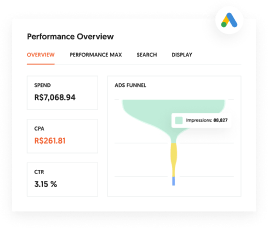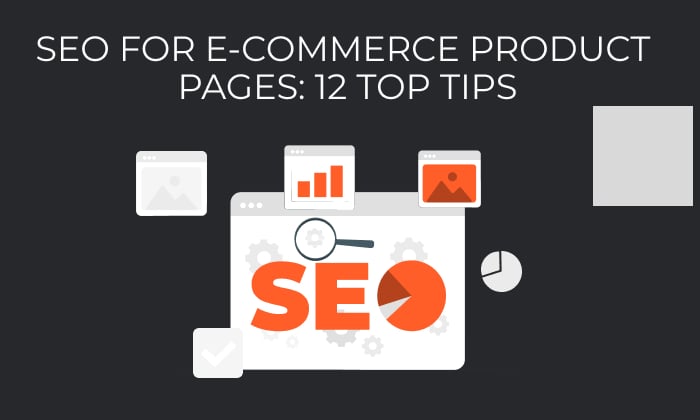
As an e-commerce business owner, do you realize your product pages are the moment of truth for your business?
Great product pages are vital to a successful e-commerce store, yet far too many sites don’t offer a decent User Experience (UX).
As always, I’ve got some stats to back this up.
According to Baynard, just 15 percent of the 71 top-grossing websites in the United States and Europe have a good product page UX. The survey also found that no site could claim a perfect UX performance.
These stats are a real shame because each visitor that makes it to a product page represents the heavy lifting and money the site owner spent to get them there.
Let’s be clear: Your product page is not the time to squander that hard work. It’s up to you to create an incredible user experience and to understand what your e-commerce customers want from your store.
Just so you know, here’s one definition of a good product page UX:
“It focuses on having a deep understanding of users, what they need, what they value, their abilities, and also their limitations.”
This definition varies from site to site and industry to industry, so it’s up to you to test and find the mix that works best for your site.
However, there’s more to UX than satisfied customers. When implemented correctly, UX can play a vital part in your product page’s SEO. You see, SEO and UX are two sides of the same coin.
You need to optimize your site to attract traffic, and once you get visitors there, you need to give them a smooth UX that keeps them on your site.
With that in mind, below are 11 ways to get more from your product pages and update your e-commerce SEO product page strategy, with examples.
Note: What works for these sites might not work for yours. Test features and functionality against your existing product pages to determine what works best for your business.
Tip One: Cut the Clutter
Whether it’s because they’re not sure what page elements drive sales or because the website owners can’t agree on what’s important, businesses end up cluttering product pages with dense text and frivolous functionality. It’s up to you to fight for simplicity on these pages.
Aside from enhancing the browsing experience, clutter-free pages help your sites load faster, aiding your product page SEO. The quicker your site loads, the faster search engines can crawl it, helping to maintain your page’s ranking.
Here’s a great example from Abercrombie & Fitch.
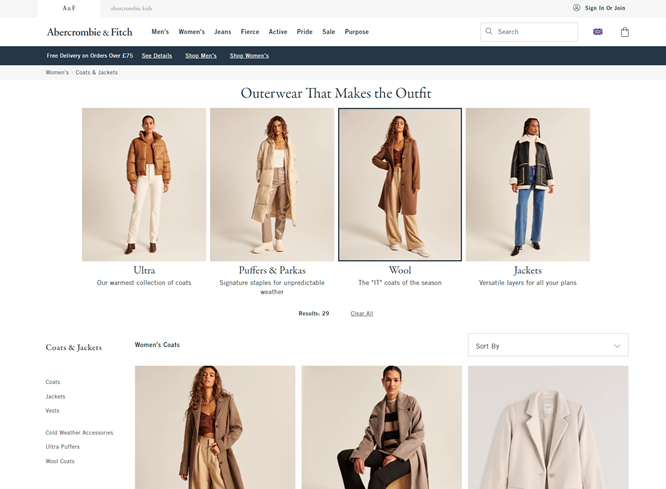
Everything about the Abercrombie & Fitch page is clutter-free. From displaying only the most basic browsing elements to the neutral color scheme. Its product pages are crisp and clean, enabling distraction-free browsing and faster loading times.
Tip Two: Clear Calls-to-Action
At this stage, confusion can kill. You want the ‘Add to Cart’ and ‘Proceed to Checkout’ buttons must be clear, consistent, and obvious. That means using a contrasting color, so your calls-to-action stand out and spur shoppers onto the next steps.
As for your product page’s SEO, when used correctly, calls to action can help improve a website’s ranking in search results. This is because they can help increase the click-through rate (CTR) from SERPs. A higher CTR often indicates to search engines that a site is relevant and valuable, which can lead to higher rankings.
Tip Three: Think Speed
Product pages need to be snappy and responsive. Laggy pages can kill confidence and breed impatience, both conversion killers. Ditch the overly designed pages for ones that load fast and respond even faster. Nordstrom is one example of a site that takes product page speed seriously.
Nordstrom’s pages load very fast because of the economical use of CSS styles for background and border elements and its minimalist design. Descriptions are brief, but with enough detail to tell shoppers what they need to know, while the star ratings above give consumer confidence.
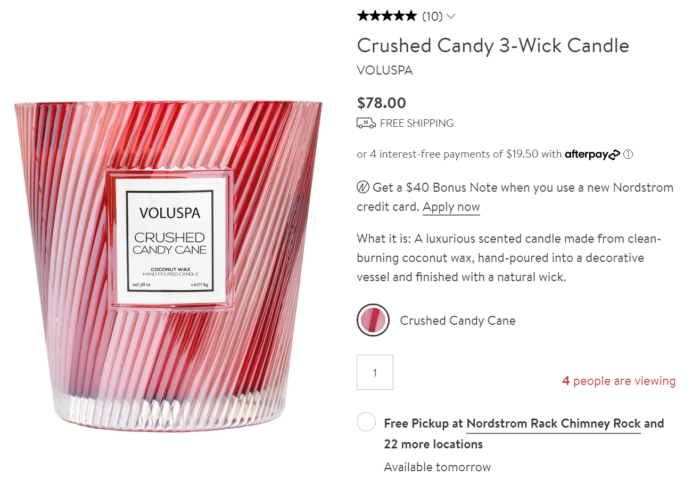
Nordstrom’s example brings me back to the importance of fast loading times.
According to research by Digital.com, 53 percent of customers expect a page to load within three seconds. If you want to boost page speed and enhance your product page SEO at the same time, keep your site lightweight, free from unnecessary apps, minify files, and limit image sizes.
Tip Four: Awesome Product Photos
We all know a picture tells a thousand words, but they also aid your product pages’ SEO. How? They increase engagement and improve accessibility, and alt text provides additional opportunities for SEO optimization.
Aside from their SEO benefits, product photos, particularly for physical goods like gadgets, apparel, and home goods, are critical for building confidence and giving the user a firm grasp of what they’re buying.
The takeaway? Invest in good photography up front, and highlight and provide access to multiple views and photos in the UI.
Look at this example from American Muscle:
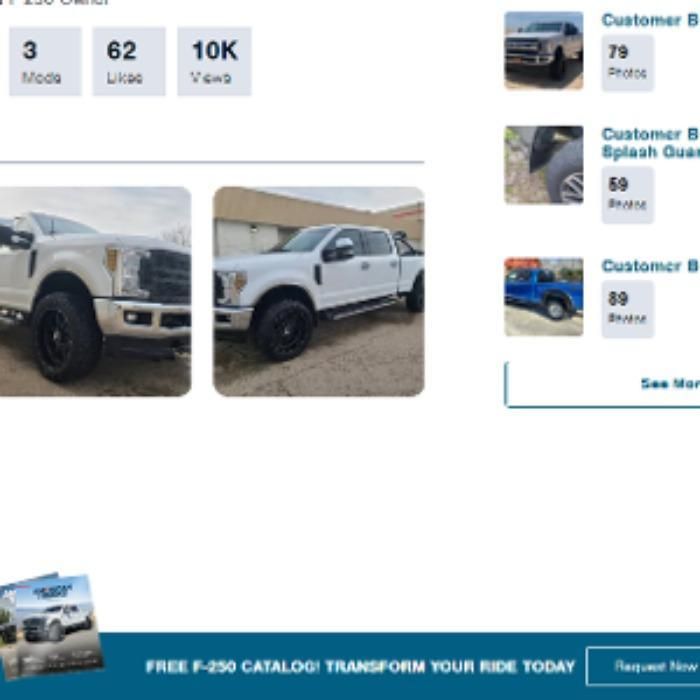
American Muscle has a great collection of photos for almost every product from every angle, on and off the car, and also allows customers to upload their pictures. These customer shots are often better than the corporate shots and include angles that customers want to see.
Tip Five: Create A Product Video Showcase
We’ve covered how photos do a lot to showcase a product, build SEO, and also build customer trust. But what if you want to take this to another level? Video could be the answer.
In many ways, video builds on a lot of the same qualities that high-quality images have. Your customers can see high-quality imagery of your product not only from all angles, but also in motion.
Also, 86% of marketers report that video is their most effective tool for generating leads. It’s proven that video is a useful tool, so why not put it to use for your products?
If you want to see this in action, look at this product video from Patagonia for a child’s coat:
Customers on the Patagonia website can click a thumbnail marked “Product Video” and get a high-quality video with music showing all angles of the coat, from the smallest details to a full-body shot.
For a parent shopping for winter clothes for their child, this is the perfect way to find if the coat is the best fit for their needs.
Tip Six: Concise Copy with Conviction
You can’t get too far without copy on your product pages, so let’s ensure that content is top-notch and working hard to help your potential customer.
The table stakes for excellent product page copy are things like price, shipping options and information, availability, sizes/colors, sizing charts, and more.
Make sure you’ve got the basics in place. Keep copy concise and highlight the high points. Use bullets to help visitors read and digest them quickly. In other words, do as Ikea does.
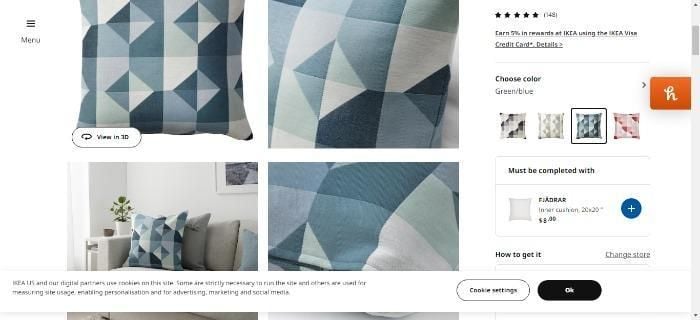
Additionally, don’t ignore opportunities to enhance your product pages’ SEO. Item descriptions are the ideal place to integrate keywords to attract organic, targeted traffic from the types of consumers most likely to buy.
Tip Seven: Build Customer Confidence
Reduce anxiety and build confidence by communicating product quality, sizing, return policies, and customer service commitments that make your visitors comfortable buying from you.
Also, provide product reviews and testimonials from other customers who have purchased the product and surface useful reviews to the top.
Adding more social cues to the user experience lets visitors know that they are not alone in their purchase and are dynamite for your product page SEO.
In addition, product reviews increase traffic, allow you to target keywords and long tail keywords, and give the search engines trust signals.
Hotels.com is just one big brand playing off this social dynamic:
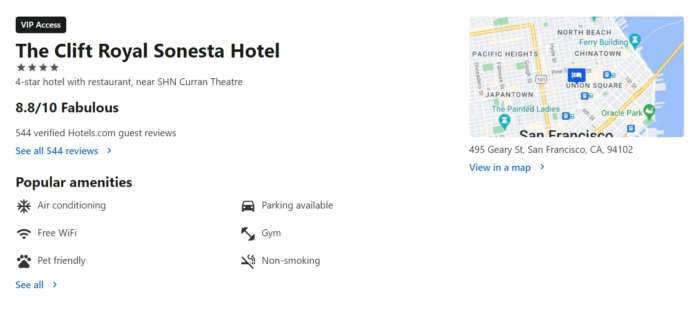
Tip Eight: Provide Options
Close, but no cigar, is never an outcome you want at purchase time. What if your visitor would’ve bought the digital picture frame if only it had a rechargeable battery, or 16 gigs of memory instead of 8? Providing related items in an easy-to-locate manner lets more visitors complete their purchase without having to exit the funnel completely.
BustedTees gives its customers options when shopping for a tee shirt with its ‘More Items to Consider’ feature.
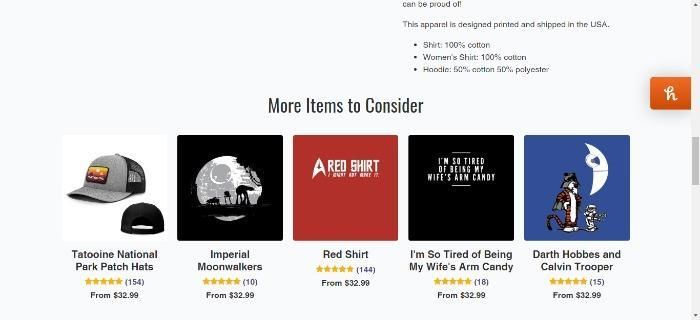
Additionally, just like regular reviews, BustedTees’ user-generated reviews provide ample opportunity for keywords, social sharing and offer further social proof, which all benefit your product page’s SEO efforts.
Tip Nine: Don’t Forget Structured Data
Want an easy way to get better visibility, boost rankings, and increase your product page SEO? Then help search engines understand your page contents with structured data. This schema markup provides context to the search engines, and they display as rich results on Google.
Providing additional information about the product, such as price and availability, alongside reviews enhances conversions. In addition, using structured data means Google can better match user intent and give searchers more relevant content.
T-Mobile is one brand using structured data to great effect.
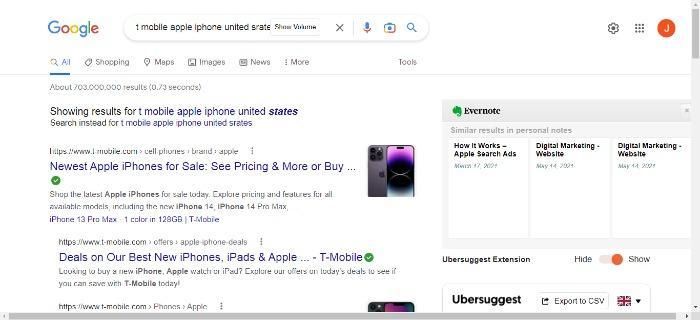
T-Mobile’s product schema for Apple iPhones incorporates several keywords, lists multiple features, and appeals to searchers who are ready to buy.
Tip Ten: Build A Reviews Option (and encourage users to participate)
There are not many guarantees in life, but here’s one safe bet: People love reviews. They instill confidence, build your site’s reputation, and can convince browsers to go ahead and make the purchase.
Fortunately, many consumers are willing to share their opinions online, but if you want to encourage them some more, make it easy:
- Send an email reminding them.
- Host a user-generated content competition and share the images on social media for additional product page SEO.
- Send customers direct links to go directly to the reviews page.
- Offer a small discount.
At Home does an awesome job of putting reviews at the forefront of its product pages.
At Home features brief, user-generated reviews. Then it takes things a little further with longer reviews underneath for added buyer confidence.
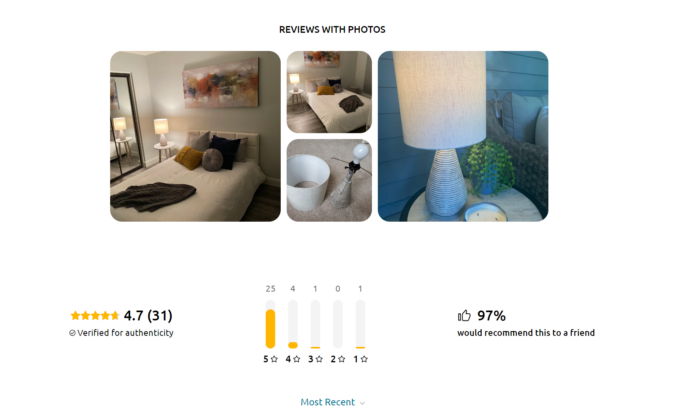
If you don’t already have a reviews option, then they’re easy enough to set up with plug-ins, and most platforms offer ways to import Google reviews.
Tip Eleven: Add FAQs
Ever wish you had your own customer service agent ready to welcome your visitors? Well, you kinda can. An FAQ page helps you answer any question your customer might have before buying, and it’s there 24/7, answering shoppers’ everyday concerns.
FAQ pages also provide an opportunity for you to highlight the features of your product in a way that is easy for customers to understand.
However, that’s not all. An FAQ page:
- is a fantastic method for building internal linking to your descriptions, thus enhancing your product page SEO.
- enhances the UX by providing quick answers to searchers’ questions.
- gives you space for more keywords.
- answers key questions.
Here’s an example from Spruce via Ahrefs.
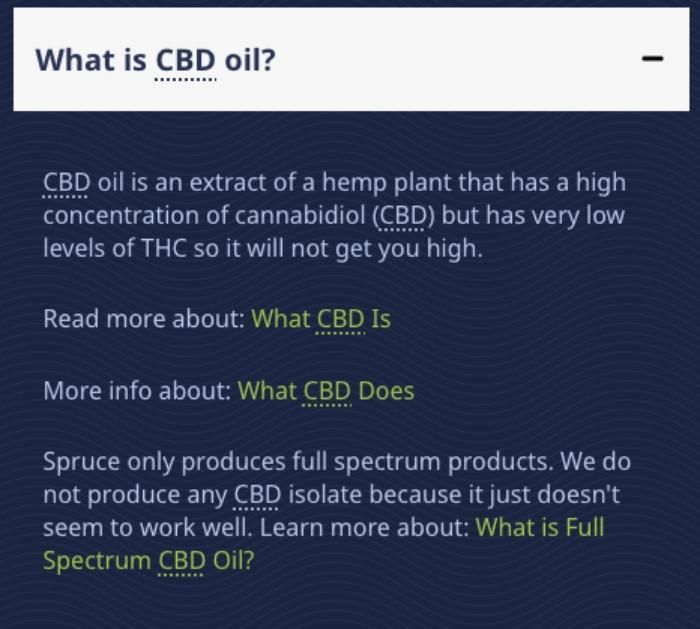
Tip Twelve: Test Your Pages Before Rolling Them Out
You’ve worked hard on your product pages. You’ve agonized over the copy, the images, and the layout, and you’re feeling good to go. However, before you roll your site out to the world, it’s imperative to test your product pages.
When you test before launching, every part of your site benefits. From your product page SEO to the UX.
Below are some tips for testing your pages:
- Use an online tool like Google PageSpeed Insights to test the speed of your pages. Slow-loading pages can frustrate visitors and drive them away from your site.
- Test any forms or other interactive elements on your pages to check they work as expected. You don’t want to lose leads or sales because of a faulty form.
- Give each page a quick once-over before you hit the publish button. Check for typos, broken links, and missing images.
- A/B test key areas like CTAs, colors, and text.
- Use a responsive design and look at the page in different browsers to see how it renders.
Finally, if you’re using any scripts or other code on your page, test them thoroughly to ensure they’re working as they should.
FAQs
How Do You SEO Optimize a Product Page?
Write engaging meta and product descriptions. Include descriptive titles with brand names and keywords in text and alt text. In addition, make sure that you add relevant internal links as well as reviews.
How Do I Do On-page SEO For an E-commerce Website?
There are some simple things that you can do to improve your on-page SEO and make your product pages more visible in the SERPs. These include using keyword-rich titles, title tags and meta descriptions, optimizing images, speed and mobile, and introducing a content strategy.
How Long Should Product Page Content Be For SEO?
According to Shopify, item descriptions should be 300 words. However, you should use your best judgment about how long content should be. Sometimes, you can justify a longer, more comprehensive description to help sell the product; on other occasions, a brief sentence or two is all you need if it provides enough detail.
Is SEO Worth it For E-commerce?
The answer is a resounding yes! SEO can help you draw more traffic to your product pages; if you need some more help attracting visitors, I’ve got some e-commerce traffic tips for you.
Additionally, SEO helps searchers find you online, stand out from the competition, and boost your conversions through added visibility.
Conclusion
Product pages can make or break your websites. It’s up to you as an e-commerce website owner to create a UX that converts as many visitors into customers as possible.
However, you also need to consider that a fantastic UX goes hand-in-hand with implementing a successful SEO strategy for your product pages.
By experimenting and testing with these 11 tips, you can identify the main conversion drivers on the product pages for your website.
Have more great tips or sites that have best-in-class product pages or e-commerce product page SEO? Let us know in the comments.

See How My Agency Can Drive More Traffic to Your Website
- SEO - unlock more SEO traffic. See real results.
- Content Marketing - our team creates epic content that will get shared, get links, and attract traffic.
- Paid Media - effective paid strategies with clear ROI.
Are You Using Google Ads? Try Our FREE Ads Grader!
Stop wasting money and unlock the hidden potential of your advertising.
- Discover the power of intentional advertising.
- Reach your ideal target audience.
- Maximize ad spend efficiency.

